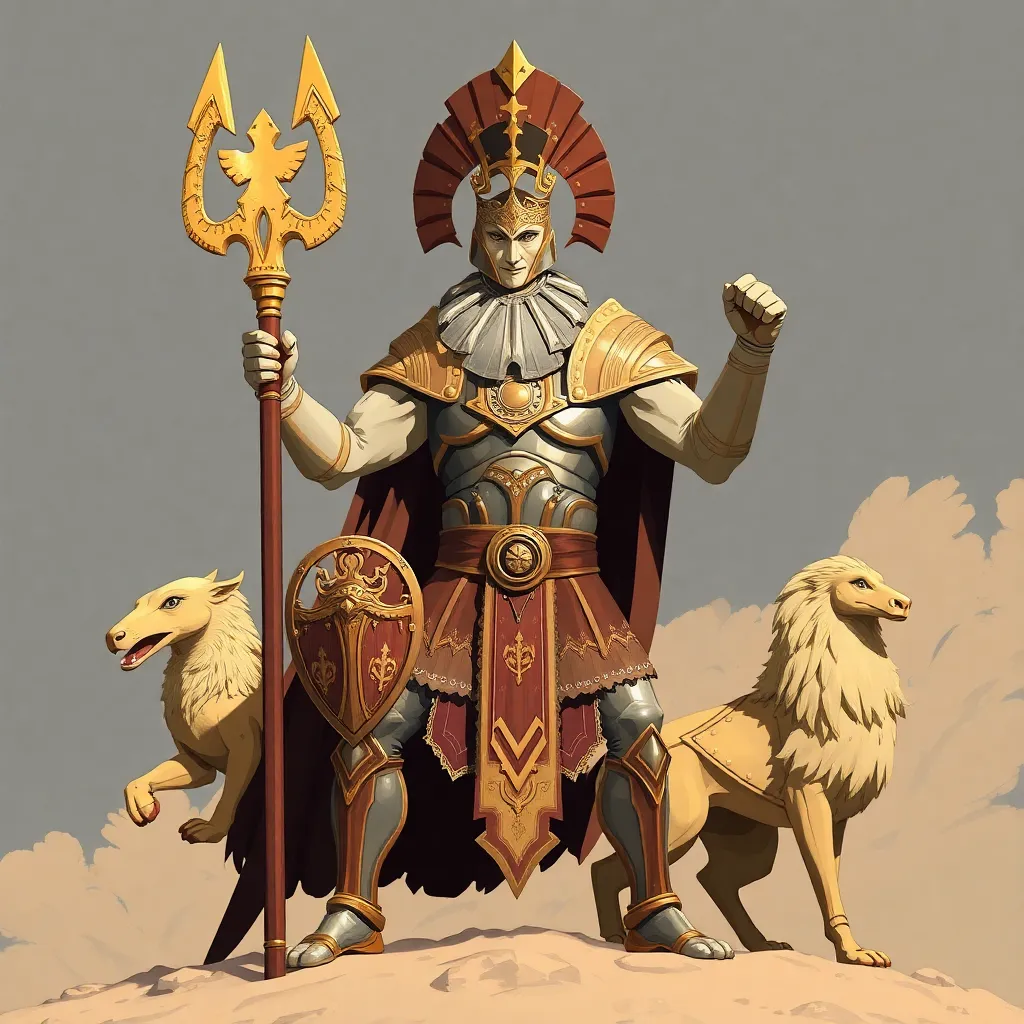Understanding Ares’ Attributes: Armor, Symbols, and Animals
I. Introduction
Ares, the Greek god of war, represents the chaotic and violent aspects of battle. Unlike his counterpart Athena, who embodies strategic warfare and wisdom, Ares is often depicted as a fierce and tumultuous figure. His attributes—armor, symbols, and associated animals—play a crucial role in understanding his character and significance in Greek mythology. Studying these elements not only provides insight into Ares himself but also reflects the ancient Greek worldview regarding war and conflict.
II. The Nature of Ares: God of War
Ares is one of the Twelve Olympian gods and is primarily known for his embodiment of war and bloodshed. He is often portrayed as a tumultuous force, thriving on the chaos of battle. Unlike Athena, who represents the strategic and just aspects of warfare, Ares is associated with the sheer brutality and ferocity of combat. This dichotomy highlights the complexities of war as viewed by the ancient Greeks, where both strategy and chaos played significant roles.
III. Ares’ Armor: The Symbol of War
Ares is typically depicted in striking armor, symbolizing his role as a warrior god. His armor includes:
- Helmet: Often a crested helmet that signifies his readiness for battle.
- Breastplate: A protective layer that showcases his preparedness and strength.
- Shield: A round shield that serves not only as defense but also as a symbol of his aggressive nature.
- Spear: His primary weapon, representing both attack and defense.
The significance of Ares’ armor extends beyond mere protection; it represents the ideals of ancient warfare, where valor and strength were paramount. The symbolism behind Ares’ equipment often reflects the ancient Greeks’ perception of war as a noble yet brutal endeavor, where the glory of battle was intertwined with the horrors of conflict.
IV. Symbols Associated with Ares
Ares is linked to several key symbols that enhance his identity as the god of war:
- Spear: Represents aggression and offensive warfare.
- Helmet: Signifies protection and the warrior spirit.
- Shield: A symbol of defense and resilience.
Each of these symbols carries profound meanings, often reflecting the duality of war—the glory and the devastation. In ancient rituals, these symbols were used in various ceremonies to invoke Ares’ favor or to seek protection in battle. Artistic representations of these symbols can be found on pottery, sculptures, and mosaics, illustrating the importance of Ares in ancient Greek culture.
V. Animals Representing Ares
Ares is associated with several animals that symbolize various aspects of war and conflict:
- Dog: Represents loyalty but also the ferocity of battle.
- Vulture: Symbolizes death and the aftermath of war.
- Boar: Represents ferocity and the chaotic nature of battle.
The symbolism of these animals extends beyond mere association; they reflect cultural interpretations of Ares’ character and the nature of war itself. For instance, the vulture’s presence often reminds us of the inevitable death that accompanies conflict, while the boar embodies the wild and uncontrollable aspects of battle.
VI. Ares in Art and Literature
Ares has been depicted in various forms of ancient Greek art, including sculptures and pottery. Artists often portrayed him in full battle gear, emphasizing his role as a warrior. Notable representations include:
- Vases: Many ancient vases depict scenes of Ares in action, often alongside other deities or heroes.
- Sculptures: Statues of Ares often highlight his muscular physique and imposing presence.
In classical literature, Ares appears in works by Homer and Hesiod, where he is portrayed as a tumultuous and often unpopular god. His character evolves through these texts, revealing the complexities of his nature and the varying perceptions of war in ancient Greek society. Modern representations of Ares, while often drawing from these classical sources, have adapted his attributes to fit contemporary narratives, sometimes portraying him as more nuanced than just the embodiment of war.
VII. The Cultural Impact of Ares’ Attributes
Ares’ symbols and attributes have significantly influenced ancient Greek culture, shaping the way warfare was understood and represented. His legacy continues in contemporary society, where the concept of war remains relevant. Ares can be compared to other mythological figures, such as Mars in Roman mythology, who shares similar attributes but embodies different cultural understandings of war.
In modern popular culture, Ares appears in various forms of media, including films, literature, and video games, where he is often depicted as a powerful and complex character. This ongoing fascination with Ares highlights the enduring relevance of his attributes and the themes of conflict and valor that resonate through time.
VIII. Conclusion
Ares, with his iconic armor, powerful symbols, and associated animals, embodies the multifaceted nature of war in Greek mythology. His attributes not only reflect the ancient Greeks’ views on conflict but also continue to resonate in contemporary culture. Understanding Ares and his significance provides valuable insights into the complexities of warfare, the human experience, and the enduring legacy of mythological figures in our society.




